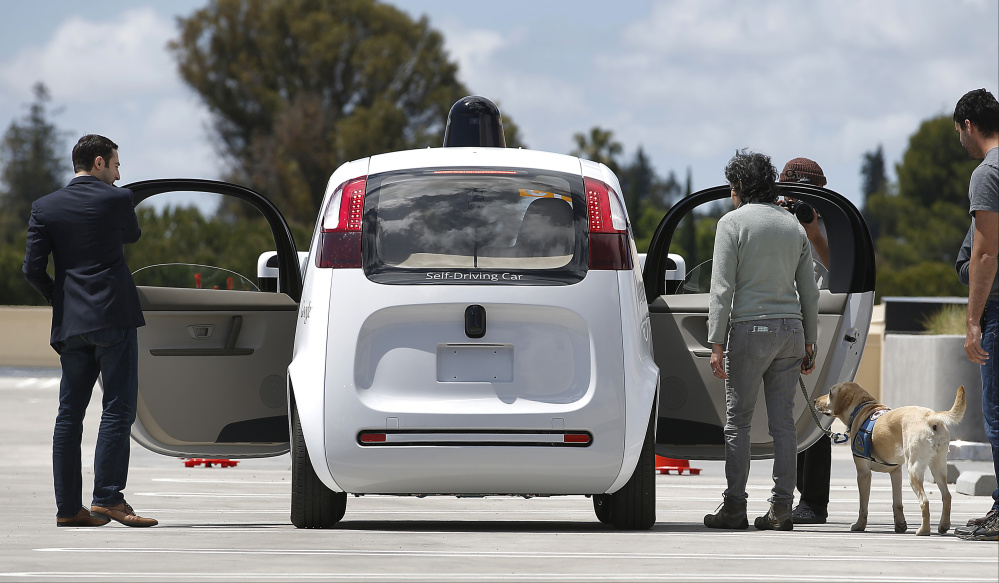LOS ANGELES — California unveiled precedent-setting draft rules Wednesday that would slow the public’s access to self-driving cars of the future until regulators are confident the technology is safe.
That cautious approach requires that the cars have a steering wheel, and a licensed driver must be ready to take over if the machine fails.
The draft sets out the framework for how the state’s Department of Motor Vehicles wants to move from the current small-scale testing of prototypes on roads and highways to giving consumers access to the fast-evolving technology. The DMV can change the rules over the coming months before they are finalized, and the industry is likely to contest them as overly burdensome.
Though no manufacturer has said it thinks the cars are ready just yet, at least a dozen are developing the technology, and the most aggressive suggest a model could be ready within a few years. Silicon Valley giant Google has pushed hardest, already building a prototype without a wheel or pedals but rigging the hardware back into the cars pending the long-anticipated regulations.
California is the largest auto market in the U.S., and its rules will be a landmark in the development of self-driving technology.
Under the draft rules, even if Google thinks its car is ready for sale, that wouldn’t be immediately possible. Initially, manufacturers would receive a permit for three years, during which time consumers could lease the cars but manufacturers would be required to keep tabs on how safely they are driving and report that performance to the state.
Before granting that initial permit, both the manufacturer and an independent certifier would need to sign off that the car has passed safety testing. Any person who wants to lease or use one of the cars would need special training provided by the manufacturer, and then receive a special certification on their driver’s license.
DMV regulation writers struggled with how they would know the technology is safe before letting it go beyond prototype testing, which requires a specially trained driver behind the wheel. The agency was supposed to propose regulations at the start of 2015, but that process has dragged on over issues including how a person could take over when the car cannot drive itself safely, how to prevent hackers from seizing control of what amount to computers on wheels, and the privacy of data that the cars collect about their users.
Send questions/comments to the editors.



Success. Please wait for the page to reload. If the page does not reload within 5 seconds, please refresh the page.
Enter your email and password to access comments.
Hi, to comment on stories you must . This profile is in addition to your subscription and website login.
Already have a commenting profile? .
Invalid username/password.
Please check your email to confirm and complete your registration.
Only subscribers are eligible to post comments. Please subscribe or login first for digital access. Here’s why.
Use the form below to reset your password. When you've submitted your account email, we will send an email with a reset code.